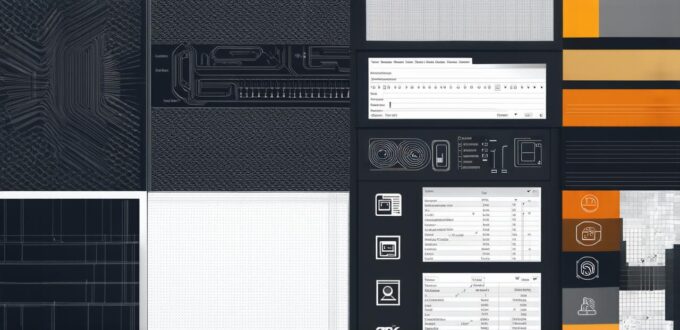System software refers to the programs that manage and control the various components of a computer system. These programs are essential for the efficient operation of a computer, and they perform tasks such as managing hardware resources, providing communication between different components, and allowing applications to run smoothly.
Operating System (OS) Software
An operating system is the primary type of system software that runs on a computer. It provides a platform for applications to run on, manages system resources, and handles communication between hardware and software components. The most common operating systems include Windows, macOS, and Linux.
Application Software
Application software refers to programs designed for specific tasks or functions, such as word processing, spreadsheet analysis, and graphic design. Examples of application software include Microsoft Word, Adobe Photoshop, and Google Sheets. These programs are typically installed on top of an operating system and run independently of other system software.
Middleware Software
Middleware software is used to connect different applications and systems together. It acts as an intermediary between the two, providing a platform for communication and data exchange. Examples of middleware software include database management systems (DBMS) and messaging systems. These programs are typically installed on top of an operating system and run independently of other system software.
Device Drivers
Device drivers are programs that control hardware devices such as printers, scanners, and cameras. They provide a way for applications to interact with the hardware components of a computer system. Without device drivers, computers would not be able to use these devices effectively. Device drivers are typically installed on top of an operating system and run independently of other system software.
Firmware Software
Firmware software is a type of software that is permanently embedded in hardware devices such as routers, switches, and network interface cards (NICs). It controls the operation of the hardware components and provides essential functions such as IP addressing and routing. Firmware software is typically installed on top of an operating system and runs independently of other system software.
System Utilities Software
System utilities software is used to perform maintenance and optimization tasks on a computer system. Examples of system utilities software include disk cleanup tools, registry cleaners, and system optimization programs. These tools help to keep the computer running smoothly and efficiently.

Real-life Examples of System Software Types
One real-life example of system software is Microsoft Windows. Windows provides a platform for applications to run on, manages system resources, and handles communication between hardware and software components. Another example is Adobe Photoshop, an application software designed for graphic design tasks. Photoshop runs on the Windows operating system and relies on middleware software such as database management systems to store and manage images.
FAQs About System Software Types
What is the difference between firmware and device drivers? Firmware software manages hardware components permanently embedded in devices, while device drivers control hardware devices that are not permanently embedded in a computer system. Firmware software is typically installed on top of an operating system and runs independently of other system software, while device drivers are typically installed on top of an operating system and run independently of other system software.
Summary
In conclusion, there are many different types of system software that serve essential functions in computer systems. Understanding the various types of system software and their functions is crucial for effectively managing and optimizing a computer system. By using real-life examples and FAQs, we can better understand how these different types of system software interact with each other and how they can be used to improve the performance of a computer system.
